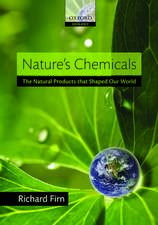Metabolic-Psychosomatic Axis, Stress & Oxytocin Regulation
Autor Alfred Bennun PhDen Limba Engleză Hardback – mai 2016
Preț: 1260.69 lei
Preț vechi: 1617.88 lei
-22% Nou
Puncte Express: 1891
Preț estimativ în valută:
241.22€ • 253.21$ • 200.23£
241.22€ • 253.21$ • 200.23£
Carte disponibilă
Livrare economică 20 martie-03 aprilie
Preluare comenzi: 021 569.72.76
Specificații
ISBN-13: 9781634852241
ISBN-10: 1634852249
Pagini: 320
Dimensiuni: 180 x 260 x 20 mm
Greutate: 0.62 kg
Editura: Nova Science Publishers Inc
Colecția Nova Science Publishers Inc
ISBN-10: 1634852249
Pagini: 320
Dimensiuni: 180 x 260 x 20 mm
Greutate: 0.62 kg
Editura: Nova Science Publishers Inc
Colecția Nova Science Publishers Inc
Cuprins
Preface; Methods; The Biological Fundamentals of the Adrenergic System of the Brain; Molecular Details of Ligand Selectivity ; Dynamics of Ligands Exchanges during Hb Deoxygenation; Enzyme-Membrane Systems; The Neuronal-Astrocyte-Capillary Coupled System Role in Adrenergic vs Glutamatergic Neurotransmission; The Dynamic Regulation of the Blood-Brain Barrier Permeability by the Neurovascular Unit (NVU); The Hypothalamic-Pituitary-Adrenal Axis Control on the Psychosomatic Metabolic Network; The Brain-NA-adrenaline Axis Controls the Fight-or-flight Response in the Hypothalamus Signals for a Multi-hormonal Adaptive Response Shifting Levels of Oxytocin, Serotonin, etc.; Insulin Role; Sleep-Wake; Interrelationship Between Steroidal Hormone Pathways; Responses to Stress & Associated Dysfunctions; Conclusion; Index.











